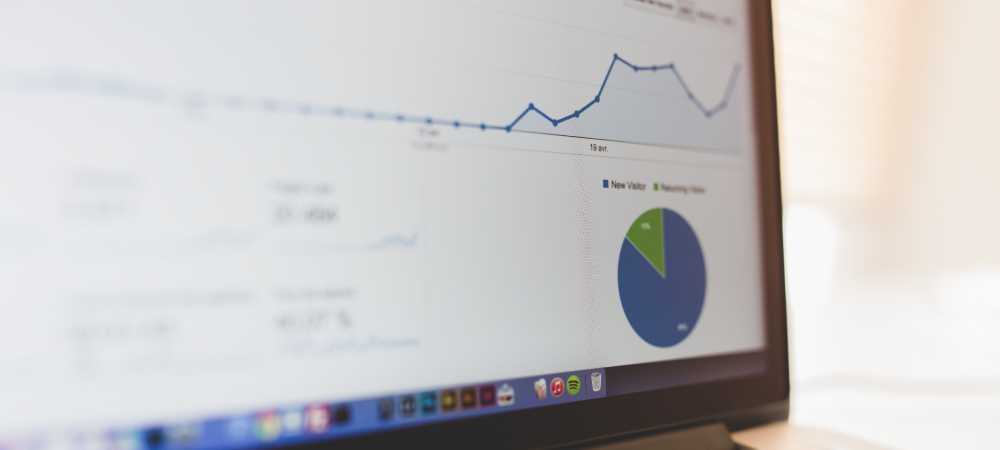One firm belief we have here at VA Partners is that, as marketers, we should always be looking to grow our skills. That’s why we dedicate time specifically to professional development for each member to learn something new. As part of my professional development, I recently completed the certification course for Google Analytics. Here are a few tips I learned along the way.
Dashboards and Shortcuts
Do you find yourself regularly checking the same metrics within Google Analytics? Well, there are some ways to make your life way easier with dashboards and shortcuts. You can insert widgets into dashboards to quickly see an overview of many different reports all on the same page. This makes it really simple to get an overview of how your site is performing. If you’re in a report that you’d like to save to a dashboard, just click the ‘Add to Dashboard’ button near the top of the report. If you’d like to find templates created by other Google Analytics users, check out their Solutions Gallery.
Shortcuts are more like bookmarks in a web browser, and one really handy feature of shortcuts is that they include any customization you’ve done to your reports. So if you’ve added a filter to a report, the filter will be included in the shortcut. To add a report to the shortcuts, simply click ‘Shortcut’ at the top of the report.
Audience Reports
There’s an insane amount of data that you can pull from the Audience Reports, but one of the coolest features is the Location Report. Google Analytics can segment your audience by country, city, continent, and subcontinent based on the IP address of the user’s browser. This information can be extremely helpful to determine untapped markets that you may not have known about by setting the heat map to display the percentage of new sessions by location. By using this data, you can better allocate your marketing budget to get the most bang for your buck.
Another useful feature of the Audience Reports is segmenting by device. Say you notice that you’ve got a high bounce rate for mobile traffic: it may be worthwhile to invest in a mobile-friendly site specifically for those users to increase retention rates.
UTM Tracker
You’ve probably noticed URLs before that contain something like: ?utm_campaign=blogpost &utm_medium=social&utm_source=facebook
That snippet of text is what’s called a UTM tracker, and it helps track referring traffic for campaigns that share their content through a variety of sources. Google has built their own UTM builder to make it very simple to produce tracking URLs. Here’s a breakdown of the different parameters to the UTM tracker:
URL: The landing page that you want the URL to direct towards
Source: could be something like ‘newsletter’ or ‘Google’
Medium: if you’re running an AdWords campaign, this could be ‘CPC’
Name: could be the name of a certain campaign, like ‘summer sale’
Term: this is only used for paid search, and notes the keywords used to for the ad
Content: used for A/B testing and content-targeted ads, so you could this to differentiate between links that direct to the same URL, such as ‘logolink’ or ‘textlink’
If you have a very large campaign, you might not want to use the UTM builder that Google has built because you can only do one URL at a time. That being said, they’ve created an easy UTM template that can help build URLs on a mass scale.
Funnel Visualization
One great feature of Google Analytics is the ability to set up goals. You can use goals to track whether visitors to your site are actually completing the tasks you’d like them to, such as signing up for a newsletter or watching a video. And one even more awesome feature within the Goals section of Google Analytics is the Funnel Visualization, which helps you see where visitors are in terms of completing the steps towards a goal. Let’s say visitors to your site, in order to sign up for a newsletter, have to visit the homepage (or any page which contains a link to sign up for a newsletter), which leads them to a Newsletter Signup page, and once they’ve filled out the appropriate form they are then taken to a Newsletter Thank You page. You can use the Funnel Visualization tool to see how many people land on the homepage, follow through to the Signup page, and complete the process by hitting the Thank You page. If you notice lots of people make it to the Signup page but don’t make it to the Thank You page, then you can determine that you may need to make adjustments to the Signup page to increase conversions.
I hope shining light on some of these features within Google Analytics can help improve your ability to track and analyze your site for better performance. Check out this blog for some helpful insights from the AdWords certification.

